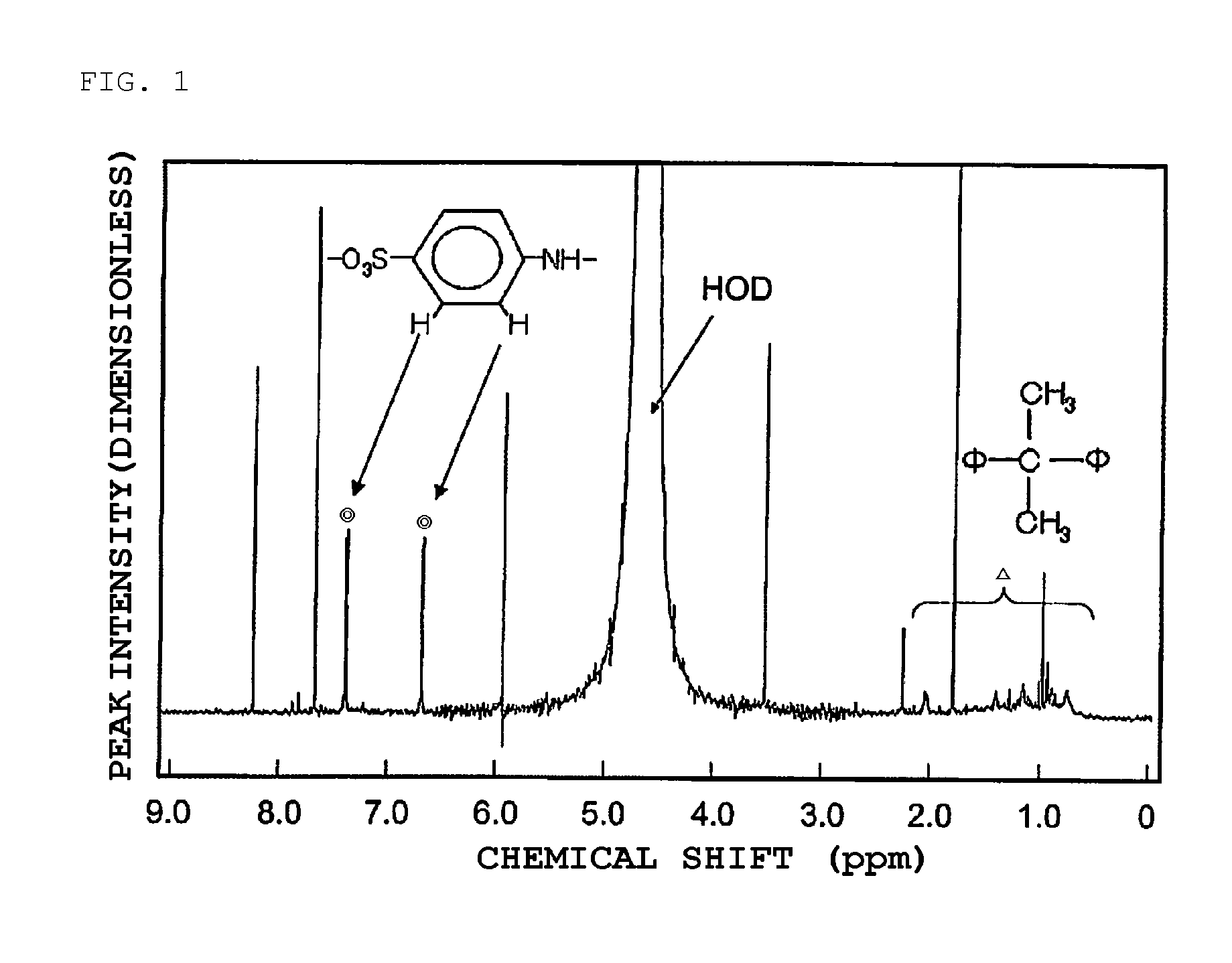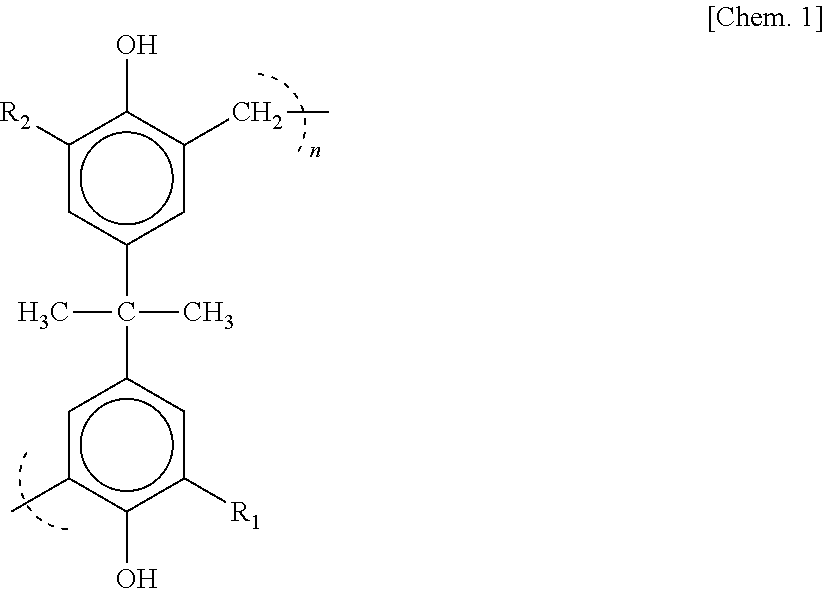Lead-acid battery
- Summary
- Abstract
- Description
- Claims
- Application Information
AI Technical Summary
Benefits of technology
Problems solved by technology
Method used
Image
Examples
example 1
Preparation of Negative Plate
[0031]As a condensate of bisphenols and aminobenzene sulfonic acid, a formaldehyde condensate of bisphenol A and sodium aminobenzene sulfonate represented by the following chemical structural formula [Chem. 1] (molecular weight: 15,000 to 20,000, sulfur content in the compound of 6 to 10 mass %) is used.
[0032]R1 and R2 represent each hydrogen or
[0033](excluding a case where both R1 and R2 are hydrogen)
[0034]To 100 mass parts of a starting lead powder including lead oxide as a main ingredient, 0.2 mass parts of a formaldehyde condensate of phenol A and sodium aminobenzene sulfonate, 1 mass part of a flake graphite having an average primary particle diameter of 180 μm, 1 mass part of barium sulfate, and 0.1 mass parts of cut fibers (polyester short fibers) were added and mixed and dispersed into the lead powder in a kneader.
[0035]Then, water and a diluted sulfuric acid (specific gravity: 1.26, converted at 20° C.) were dropped and kneaded to prepare a past...
existent examples 1 to 3
[0046]A carbon black prepared from a heavy oil as a starting material (specific surface area: 260 m2 / g) was blended by the following amount instead of the flake graphite in Example 1. That is, to 100 mass parts of the starting lead powder including lead oxide as the main ingredient, the carbon black was blended by 0.3 mass parts in Existent Example 1, 0.5 mass parts in Existent Example 2, and 1 mass part in Existent Example 3, and 75D23 type batteries were manufactured in the same manner as in Example 1 except for the change described above.
examples 8 to 14
[0047]In Example 1, the flake graphite was blended by the following amounts while changing the blending amount thereof. That is, to 100 mass parts of the starting lead powder including lead oxide as a main ingredient, the flake graphite was blended by 0.2 mass parts in Example 8, 0.4 mass parts in Example 9, 0.5 mass parts in Example 10, 1.5 mass parts in example 11, 2 mass parts in Example 12, 2.5 mass parts in Example 13, and 3 mass parts in Example 14, and 75D23 type batteries were manufactured in the same manner as in Example 1 except for the change described above.
[0048]The content of the blended flake graphite in Examples 8 to 14 was 0.2 mass parts, 0.4 mass parts, 0.5 mass parts, 1.6 mass parts, 2.2 mass parts, 2.7 mass parts, and 3.2 mass parts, respectively based on 100 mass parts of the negative active material (spongy metallic lead) in a fully charged state.
PUM
 Login to view more
Login to view more Abstract
Description
Claims
Application Information
 Login to view more
Login to view more - R&D Engineer
- R&D Manager
- IP Professional
- Industry Leading Data Capabilities
- Powerful AI technology
- Patent DNA Extraction
Browse by: Latest US Patents, China's latest patents, Technical Efficacy Thesaurus, Application Domain, Technology Topic.
© 2024 PatSnap. All rights reserved.Legal|Privacy policy|Modern Slavery Act Transparency Statement|Sitemap



